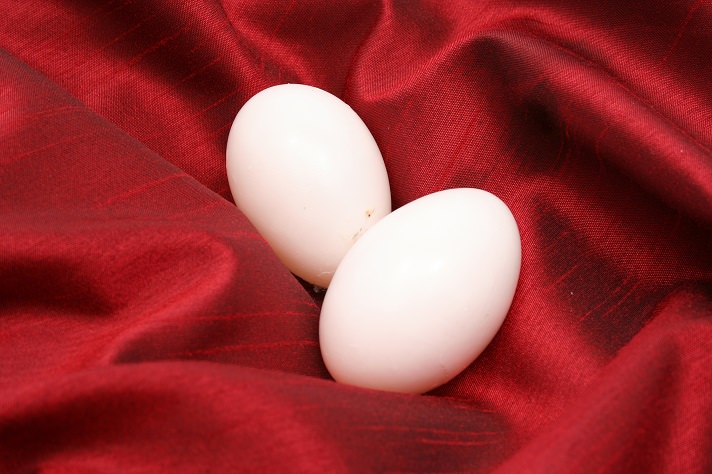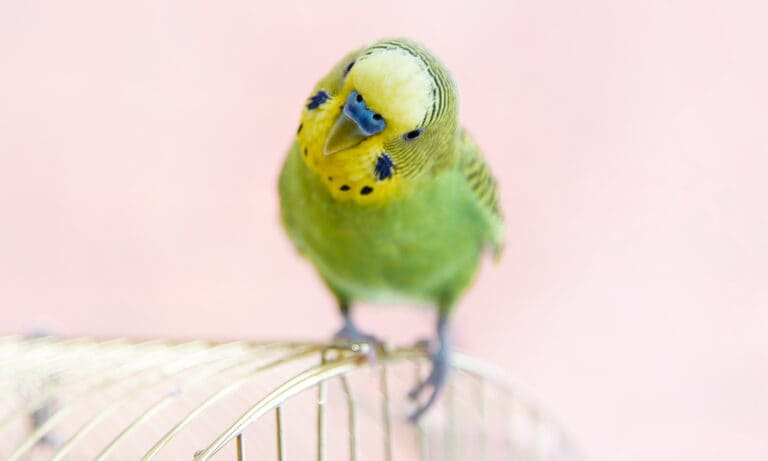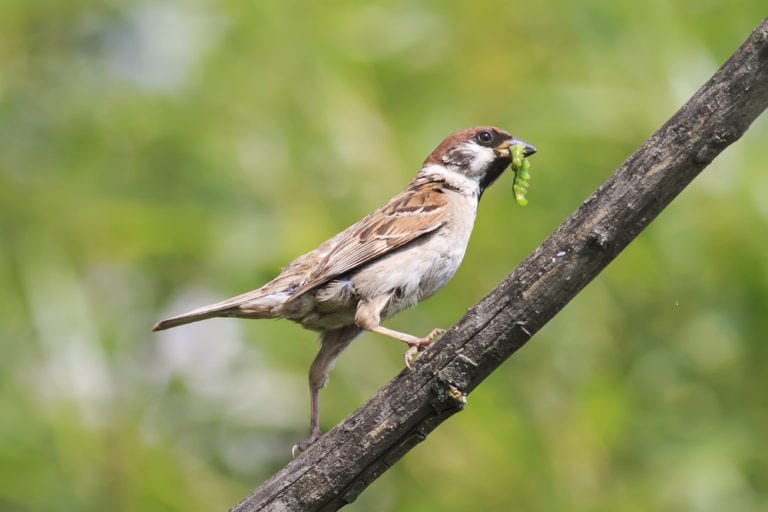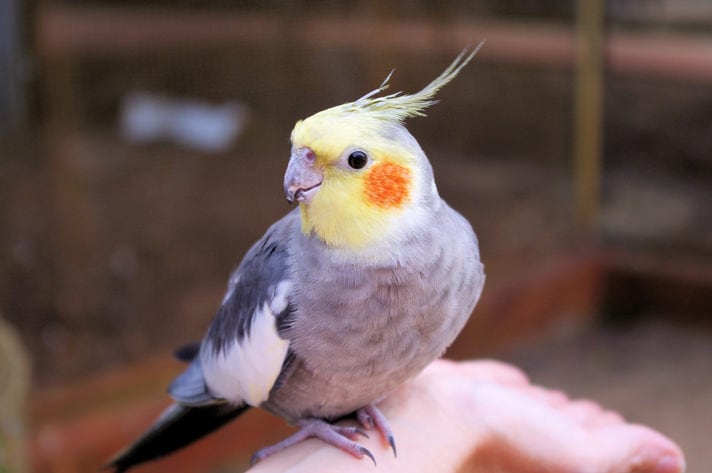Oology is the branch of ornithology that deals with the anatomy and physiology of eggs as well as the size, shape, color and other characteristics. Nearly all animals produce eggs, from humans, dogs and insects to fish, snakes and birds.
Mammal embryos develop completely within the female body and get their nutrition directly from the female. Birds, on the other hand, produce a hard-shelled egg designed for the embryo to develop outside of the female body. It is self-contained and no external nutrients are needed.
The Components Of An Egg
An egg has four basic structures: the yolk and its associated membranes; the germinal disc; the albumen (white); and the shell and its associated membranes. Each component performs specific functions in the development of the embryo.
The yolk is the main source of nutrition for the embryo. “It is high in fat and protein,” noted Greg Burkett, an avian veterinarian in Durham, North Carolina. “The fat gives yolk its yellow color. The more fat contained in the yolk, the darker the yellow.”
Surrounding the yolk are four membranes that keep it intact and in contact with, but separate from, the albumen. After the egg has been fertilized and incubation starts, a system of blood vessels develops within these yolk membranes, which completely surround the yolk and carry nutrition to the embryo.
On the surface of the yolk is the germinal disc, a small disc of cytoplasm containing the DNA nucleus of the female cell, or ova. You need a microscope to see the nucleus, but you can see the germinal disc with the naked eye. It appears on the surface of the yolk as a white dot. “If the egg is fertile, the dot is called a blastoderm; if it is not fertile, it is called a blastodisc,” Burkett said. “The blastoderm contains the genetic material necessary to develop into offspring of the parent birds.”
The albumen is the white or clear part of the egg that surrounds the yolk. Made up mostly of protein, it also contains globulins, which provide immunity from disease. The albumen feeds the developing embryo with water and protein. When the chick is ready to hatch, the albumen acts as a lubricant to help the chick turn, push and struggle to free itself from the egg.
Albumen consists of thick viscous forms and thin, watery forms. A layer of watery albumen surrounds the yolk, and a more viscous layer of albumen is in contact with the watery layer. A third watery layer of albumen is in contact with the shell’s inner membrane.
A dense layer of albumen called the chalaziferous layer is in direct contact with the outer yolk membrane. An extension of this layer forms the chalazae, twisted strands of thick albumen that connect to the shell membrane at each end of the egg. The chalazae stabilizes the yolk and embryo in the center of the egg within the albumen layers. The chalazae become twisted as the egg is turned during incubation.
The hard outer surface of a bird egg is the shell. It provides protection and structure to house the embryo. The shell contains pores to allow for transpiration of water through the shell. The shell consists of three layers; the outermost layer is the cuticle. Beneath the cuticle is the calcium carbonate layer called the testa, and the innermost layer is the mammillary layer.
“The cuticle consists of dried mucus laid down by the uterus and serves to regulate evaporation of moisture and to protect the embryo from bacterial infection,” Burkett explained. “The testa is the layer that makes up most of the eggshell structure and provides calcium to the growing chick. It is also the layer that contains the pigments if the egg is colored. The mammillary layer is in direct contact with the shell membranes and is the foundation for the testa.”
Two membranes lie directly beneath the shell: the inner shell membrane and the outer shell membrane. “At the blunt end of the egg, the two membranes separate, forming a space between them called the air cell,” Burkett noted. “The air cell is formed after the egg is laid and cools. The outer shell membrane adheres to the mammillary layer of the shell. The inner shell membrane covers the liquid inside the egg.”
Fun Egg Facts
While all bird eggs have the same basic components and physiology, not all bird eggs have the same size, shell thickness, shape or color.
Egg Size
Avian eggs vary is by size, which is influenced by the size of the yolk. The bigger the yolk, the bigger the egg. Yolk size is relative to the size of the species. A small bird is going to have a much smaller yolk than a larger bird.
Within a species, egg size can vary. If the hen is a large bird and she’s healthy, she’s more likely to lay slightly larger eggs than a hen of the same species that’s smaller and in poor health. Typically the last egg in a clutch is smaller than the earlier ones.
In common pet bird species, finches lay the smallest egg, about ¼ to ½ inch in length. Budgie, lovebird and cockatiel eggs are only slightly bigger — usually no more than five-eighths of an inch long. Conure eggs are around ¾ inch in length. African grey and Amazon parrot eggs usually are around 1 inch long. Large cockatoos and macaws lay the biggest eggs of the pet bird species, typically in the 1¼- to 1½-inch range.
Shell Thickness
In general, the larger the egg, the thicker the shell. The ostrich would have a very thick egg shell, and indeed it does. Its shell is around one-eighth of an inch thick, which makes its difficult to open. Small birds such as hummingbirds, finches, sparrows, budgerigars, cockatiels, bluebirds and robins generally have very thin egg shells. There are exceptions however. Some of the larger psittacine species like hyacinth macaws and sulphur-crested cockatoos have thin egg shells, as do the albatrosses. Chickens and ducks, on the other hand, tend to have very thick egg shells. Why the discrepancy? Some biologists speculate that chicks among species with thin egg shells do not absorb as much calcium from the shell as chicks that hatch from thick-shelled eggs. Birds with thicker egg shells absorb more calcium from the shell while they are growing inside the egg and, as a result, have stronger skeletons when they first hatch. Species with thin shells, like psittacines, develop skeletal strength after hatching, and they get the calcium necessary to do this from the food they eat.
Shape
The majority of avian eggs match the shape of chicken eggs, but there are some exceptions. Budgies, for instance, tend to lay very round eggs. Fast-flying, stream-lined birds like swifts and swallows lay long, elliptical eggs. Owls tend to lay very spherical eggs.
Color
All parrot species have white eggs with no markings. Many bird species, however, lay very colorful eggs. Just about every color of the rainbow is represented. Tinamous, ostrich-like birds found in South America, lay very shiny, emerald green eggs. Blue birds and robins produce blue eggs. Emus have greenish-black eggs. Rheas lay creamy beige eggs. Chickadee eggs have a red tint to them, and falcon eggs appear brownish-orange. Researchers presume that egg color and markings help camouflage and protect the eggs from predators. For example, birds that nest on the ground, tend to have eggs that are brown with black markings to blend with the rocks and soil around them.
Posted By: Rebecca Sweat
Featured Image: via Gina Cioli/Lumina Media
Share:









